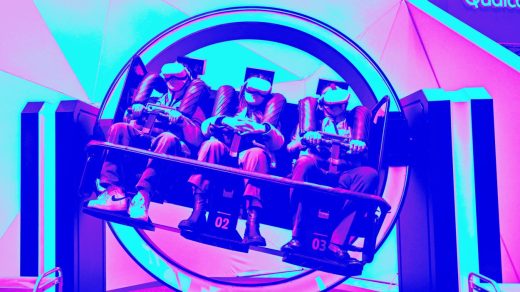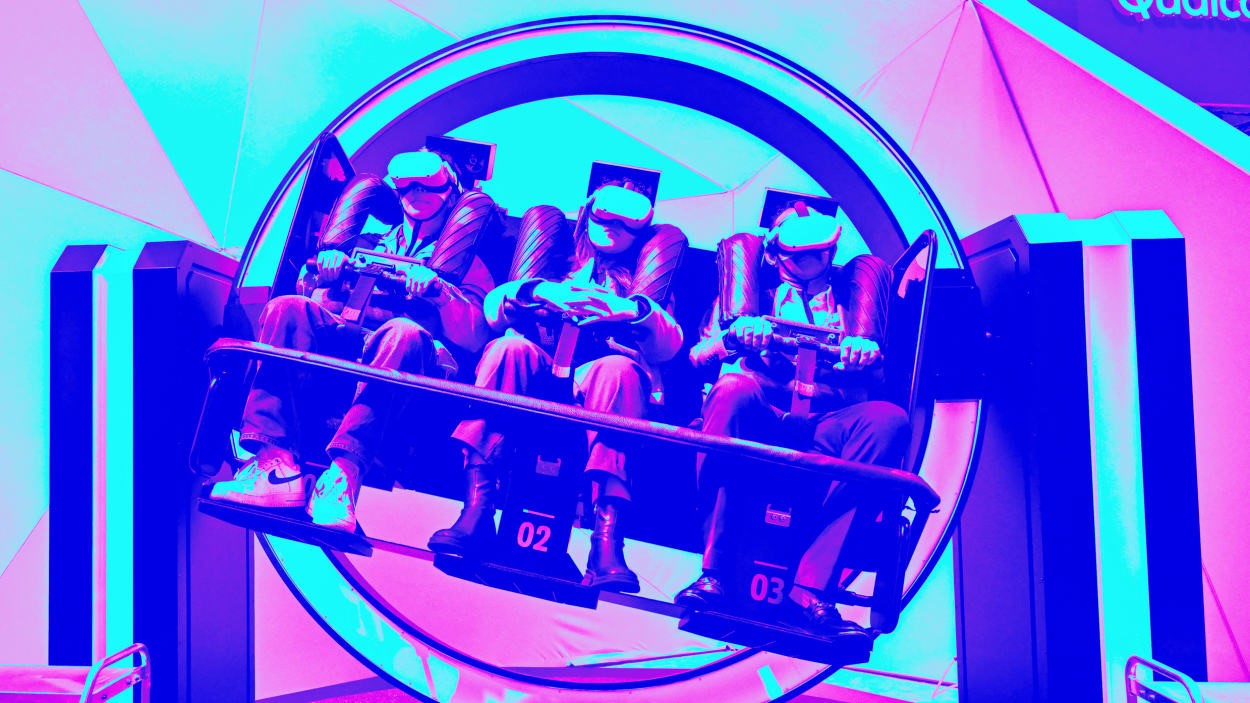How CES survived the great tech trade show meltdown
Welcome back to Plugged In, Fast Company’s weekly tech newsletter. I’m global technology editor Harry McCracken, and I’m filing this edition from a surprisingly comfy armchair in a hallway at the Wynn hotel in Las Vegas, the most peaceful spot I found to do some writing during CES. If a friend or colleague forwarded this edition to you—or you’re reading it on FastCompany.com—you can check out previous issues and sign up to get it yourself every Wednesday morning. Your feedback and ideas are always appreciated: Send them to me at hmccracken@fastcompany.com.
Can I start by recommending a few Fast Company stories you may not have read yet?
Slightly over nine years ago, not long after I joined Fast Company, I explained why—for the first time in years—I wasn’t making the trek to Las Vegas to attend CES, the tech industry’s biggest annual gadgetfest. Having discovered that staying home wasn’t a ruinous, career-destroying mistake, I went on to skip the next seven editions. I didn’t return until last year, after being invited to moderate a panel. But I’m back in Vegas this week for the 2024 show, which I wouldn’t be if I’d regretted ending my sabbatical.
It wasn’t a given that CES would still be here once I decided I (kind of) missed it. There’s a long list of tech conferences that were once huge and no longer exist, such as COMDEX (1978-2004) and Macworld Expo (1985-2014). Just last month, the video game industry’s E3 formally ended its run after several years of limbo. As Hemingway would put it, such shows often fail gradually, then suddenly: COMDEX was the U.S.’s largest trade show of any kind in 1997, and so tiny in 2003, its final year, that I cruised the entire floor in something like 20 minutes.
Like E3 and every other business that involved face-to-face interaction between human beings, CES was shell-shocked by COVID-19. Little by little, however, the 57-year-old event has fought its way back to something resembling normalcy, Which, in this case, means it’s a massive affair spanning the Las Vegas and Venetian convention centers and seemingly every ballroom and meeting space on the Strip. Maybe it hasn’t returned to its pre-pandemic peak, but it feels vibrant enough to me.
That’s especially striking given how many reasons there have always been to avoid going to a major trade show: the expense, the wear and tear on your feet, the possibility that you won’t accomplish enough to justify the time out of the office, In 2018, analyst Tim Bajarin—who started attending CES in 1976—outlined the case for CES going virtual, and said he hoped it would happen within a few years. Well, it hasn’t yet—except in 2021, when it had no choice—and I was pleased to run into Tim at this year’s show. (Serendipitous face time is one of the best parts of attending any conference.)
Eleven years ago, in a Buzzfeed News article explaining why the outlet wasn’t bothering with attending CES, Matt Buchanan contended that in the internet age, consumer electronics hardware was no longer at the heart of how we interact with technology, rendering a show devoted to it less relevant. He was right about the changing times. But instead of clinging to its historic mission, CES has done an intrepid job of evolving to reflect tech’s never-ending, always-expending role in our lives. (Note: Despite what many people think, the event is not known as “The Consumer Electronics Show,” having abbreviated its name to just “CES” so long ago that I’m not sure when it happened.)
As long as there’s a CES, consumer electronics will remain part of the mix—most iconically in the form of huge honkin’ TVs, such as a 115-inch model announced this year by TCL. But the Consumer Technology Association, the trade organization behind the show, seems happy to welcome any exhibitor with a story involving technology, from corporate giants to startups to government agencies. That helps keep the halls full. On a higher level, it also accurately reflects an era in which it’s tough to partition the topic of tech into tidy subdivisions.
Case in point: I spent time this year visiting Walmart’s gigantic booth, which, technically speaking, was a two-story temporary building erected in a parking lot. The company was showing off stuff like how it’s using Amazon Go-like sensors and software to enable grab-and-go shopping at its Sam’s Club stores. Is that consumer tech? Retail logistics? Enterprise AI? I’m not sure. Other exhibits surrounding Walmart’s featured companies involved in robotics, smartphones, automotive components, and, yes, enormous TVs. Thematically, it was a tad cacophonous. Yet, if CES weren’t so all-inclusive, it might well have faded away by now.
You could argue that the event’s lack of a tightly defined mission is a flaw in its strategy. A hyper-smart former employer of mine, who was fond of talking about the specific driving out the general, might have done that. Then again, he founded the company that once put on Macworld Expo and E3—much more focused shows that didn’t manage to make it to 2024.
Back in that 2013 BuzzFeed story, Buchanan gave an example of CES’s dwindling influence. The four most important companies in technology—at least according to then-Google chairman Eric Schmidt—were Apple, Amazon, Facebook, and Google. And none of them were at CES that year.
Fast forward to 2024, and Google, Amazon, and Meta (née Facebook) all have official presences at the show. In fact, Google is the most unavoidable brand here, having blanketed Vegas (including, perhaps inevitably, the Sphere) in ads for Android. Even Apple, which doesn’t have a booth, is hardly boycotting the event: I count at least 19 of its employees among the attendees listed in the CES app.
I do expect CES to continue to be perennial fodder for skeptics. It’s just too overwhelming, unedited, and generally circus-like to be beloved, or even just universally respected—and that’s before you get to the fact that it’s held in Las Vegas, adding an extra layer of dysfunctional weirdness. Full disclosure: Sixteen years ago, I wrote a pretty acidic CES takedown of my own. But on behalf of everyone who’s ever questioned the show’s whole purpose, I hereby declare it to have had the last laugh—and admit that the chances seem decent I’ll be back in 2025.
Fast Company – technology
(13)



